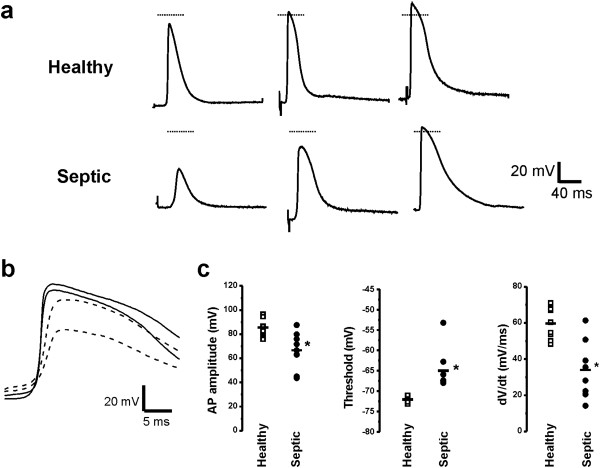Figure 1.

Changes in action potentials suggest reduced Na current underlies reduced excitability. (a) Three representative papillary muscle axon action potentials from healthy and septic rats are shown to demonstrate the range of amplitudes in each group. While the largest action potentials from papillary muscle in septic rats were normal in amplitude, only 35% of action potentials overshot 0 mV; whereas in healthy papillary muscles, 73% overshot 0 mV. In most traces, the stimulus artifact can be appreciated prior to the onset of the action potential. The horizontal line represents 0 mV. (b) Superimposed on an expanded timescale are two action potentials from healthy rats (solid lines) and two action potentials from septic rats (dashed lines). The action potentials from septic rats have reduced amplitudes and rate of rise, but are similar in duration to those from healthy rats. (c) Scatter plots of animal means of action potential characteristics for eleven healthy and eight septic rats. Horizontal lines represent the mean for each group. *P <0.05. AP, action potential; dV/dt, action potential rate of rise.
